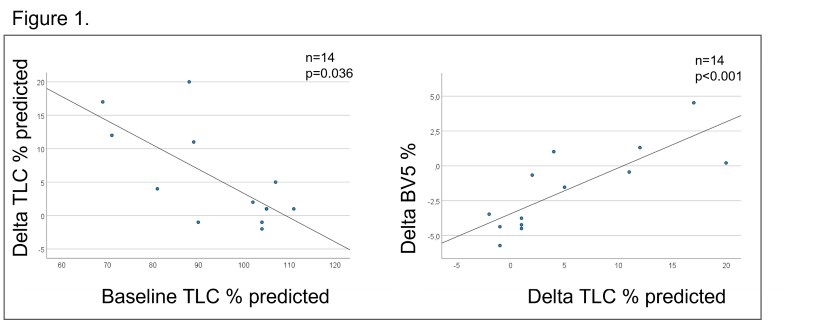Abstract
Background: Air trapping is common in patients with post-acute sequelae of COVID-19 (PASC)(1). Changes in pulmonary blood vessel volume measured by quantitative CT analysis have been observed in patients with acute COVID-19 infection (2).
Aim: The aim of this study is to investigate the effect of PR on lung volumes and blood vessel volume in subjects with PASC.
Methods: Subjects with long covid were studied retrospectively. All subjects performed a pulmonary function test (PFT) and a chest CT at baseline and following a 3-month PR program. The scan was post-processed to compute the air trapping and vascular volume in vessels smaller than 5mm˛ (BV5) in cross-sectional area.
Results: 14 patients (5 male, 9 female) were enrolled in the study with mean of age 42 (SD=14) years. Mean TLC% pred increased from 95% pred (range 43%) to 100% pred (range 29%) (p=0.058), and baseline TLC correlated with delta TLC (r= -0.584; p=0.036). BV5% decreased from 64% to 62% (p=0.084), and delta TLC correlated with delta BV5% (r=0.824, p<0.001) (Fig.1.).

Conclusion: At baseline, there is a wide range in TLC. PR seems to be effective in normalizing the lung volumes. TLC tended to decrease in patients presented with hyperinflation and to increase in those with restrictive defects. BV5% is higher than observed during acute COVID-19 infection and is directly correlated with change in TLC.